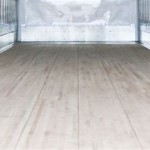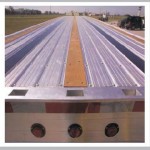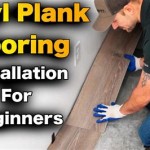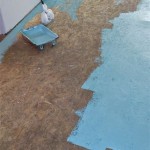Belle Bamboo Flooring: A Comprehensive Review
Bamboo flooring has emerged as a popular alternative to traditional hardwood, gaining traction due to its perceived sustainability, durability, and aesthetic appeal. Belle Bamboo Flooring is one such brand that offers a range of bamboo flooring products. This article will provide a comprehensive review of Belle Bamboo Flooring, examining its product offerings, material quality, durability, installation process, environmental impact, maintenance requirements, cost, and overall value proposition.
The goal is to provide potential consumers with a detailed understanding of Belle Bamboo Flooring, enabling them to make informed decisions based on their specific needs and preferences. This review will delve into the strengths and weaknesses of Belle Bamboo Flooring, offering an objective assessment for those considering this flooring option.
Product Offerings and Variations
Belle Bamboo Flooring offers a diverse selection of bamboo flooring products, catering to a variety of design preferences and functional requirements. Their product line typically includes horizontal, vertical, and strand-woven bamboo flooring, each possessing distinct characteristics in terms of appearance and durability. Horizontal bamboo features a wider grain pattern, showcasing the natural nodes of the bamboo stalk prominently. This aesthetic often appeals to those seeking a more traditional bamboo look.
Vertical bamboo, on the other hand, presents a more linear and uniform appearance. It's constructed by orienting bamboo strips vertically, creating a subtle and modern visual. Strand-woven bamboo is arguably the most durable option, made by compressing shredded bamboo strands under high pressure and heat. This process results in a denser and harder material that often rivals the hardness of many hardwood species.
Beyond these core types, Belle Bamboo Flooring usually offers a variety of stain colors and finishes. The available color palettes can range from light, natural tones to darker, more contemporary shades. Finishes can include matte, satin, and glossy options, influencing the flooring's sheen and resistance to scratches. The availability of different plank widths and lengths further contributes to the customization options, allowing homeowners to tailor the flooring to the specific dimensions and style of their spaces.
Furthermore, Belle Bamboo Flooring might offer different installation methods, such as tongue-and-groove and click-lock systems. Tongue-and-groove flooring requires gluing or nailing the planks to the subfloor, while click-lock systems allow for a floating installation, where the planks interlock without adhesive. The choice of installation method can influence the labor costs and the overall ease of installation.
Material Quality and Durability
The quality of the raw bamboo material and the manufacturing process significantly impact the durability and longevity of bamboo flooring. Belle Bamboo Flooring typically sources its bamboo from sustainably managed forests, emphasizing the use of mature bamboo stalks for optimal strength and stability. The selection of mature bamboo is crucial, as younger bamboo tends to be softer and more prone to damage.
The manufacturing process, particularly the pressing and drying stages, plays a vital role in the final product's integrity. Properly pressed and dried bamboo is less likely to warp, crack, or expand excessively in response to moisture fluctuations. Belle Bamboo Flooring often employs rigorous quality control measures to ensure that its products meet established industry standards for hardness, stability, and formaldehyde emissions.
Strand-woven bamboo flooring from Belle is generally considered the most durable option, exhibiting a high Janka hardness rating, which measures the resistance of wood or flooring materials to indentation. A higher Janka rating indicates greater resistance to scratches, dents, and wear. While specific Janka ratings may vary depending on the product line, strand-woven bamboo typically outperforms horizontal and vertical bamboo in terms of durability.
However, it's important to note that even the most durable bamboo flooring is not impervious to damage. Excessive moisture exposure, improper cleaning methods, and heavy impact can still lead to issues such as warping, staining, and dents. Proper maintenance and care are essential to maximizing the lifespan of Belle Bamboo Flooring.
Installation, Maintenance, and Environmental Considerations
The installation process for Belle Bamboo Flooring can vary depending on the chosen installation method. Tongue-and-groove flooring typically requires professional installation, as it involves precise cutting, gluing, and nailing techniques. Click-lock systems, on the other hand, are often considered more DIY-friendly, although proper subfloor preparation and careful alignment are still crucial for a successful installation.
Before installing any bamboo flooring, it's essential to ensure that the subfloor is level, clean, and dry. Uneven subfloors can lead to uneven flooring and potential damage over time. Moisture barriers may also be necessary, particularly in areas prone to humidity, to prevent moisture from seeping into the bamboo and causing warping or mold growth.
Maintaining Belle Bamboo Flooring involves regular sweeping or vacuuming to remove dirt and debris. Damp mopping with a mild, pH-neutral cleaner is generally recommended for deeper cleaning. Avoid using harsh chemicals or abrasive cleaners, as these can damage the finish and dull the flooring's luster. Promptly wipe up spills to prevent staining. The use of rugs or mats in high-traffic areas can further protect the flooring from wear and tear.
Environmentally, bamboo is often touted as a sustainable flooring option due to its rapid growth rate. Bamboo reaches maturity much faster than hardwood trees, making it a renewable resource. However, the environmental impact of bamboo flooring extends beyond the raw material itself. The manufacturing process, including the use of adhesives and finishes, can have environmental consequences. Belle Bamboo Flooring typically claims to use low-VOC (volatile organic compound) adhesives and finishes to minimize indoor air pollution. Consumers concerned about environmental sustainability should look for products that are certified by reputable organizations such as the Forest Stewardship Council (FSC) or the FloorScore program, which ensure responsible forest management and low emissions.
Cost and Value Proposition
The cost of Belle Bamboo Flooring can vary depending on the type of bamboo, the finish, and the installation method. Strand-woven bamboo is typically more expensive than horizontal or vertical bamboo due to its increased durability and density. The cost of professional installation can also add significantly to the overall price. Obtaining quotes from multiple installers is recommended to ensure competitive pricing.
When evaluating the value proposition of Belle Bamboo Flooring, it's important to consider its durability, aesthetics, sustainability, and maintenance requirements. While bamboo flooring may not be as inherently durable as some high-end hardwood species, it offers a good balance of durability and affordability. Its unique grain patterns and color variations can add visual interest to any space. Its sustainability credentials make it an attractive option for environmentally conscious consumers.
However, potential drawbacks should also be considered. Bamboo flooring is more susceptible to moisture damage than some other flooring options. It may not be suitable for bathrooms or basements with high humidity levels unless specifically designed for such environments. The long-term maintenance required to keep bamboo flooring looking its best should also be factored into the decision-making process.
Ultimately, the value of Belle Bamboo Flooring depends on individual priorities and requirements. If durability, sustainability, and aesthetics are key considerations, and if proper maintenance is diligently followed, Belle Bamboo Flooring can be a worthwhile investment. However, consumers should carefully evaluate their specific needs and compare different flooring options before making a final decision. It is wise to request samples of Belle Bamboo Flooring and examine them in the intended installation environment to assess their suitability for the space's lighting and décor.
Furthermore, checking online reviews and seeking feedback from other homeowners who have installed Belle Bamboo Flooring can provide valuable insights into the product's real-world performance and customer satisfaction. This additional research can help ensure that the flooring aligns with expectations and provides lasting value.

Belle Xl 8mm Laminate Wide Plank Installation Supplier Wholer

Belle Xl 8mm Laminate Wide Plank Installation Supplier Wholer

Woodland Bamboo Flooring Modern Floors

Lifeproof Belle Meade Oak 22 Mil X 8 7 In W 59 L Waterproof Lock Luxury Vinyl Plank Flooring 700 6 Sq Ft Pallet 304103102 The Home Depot

Engineered Hardwood Flooring

Cali Sample Longboards Sandbar Oak Waterproof Wood Look Interlocking Luxury Vinyl Plank In The Flooring Samples Department At Com

Godfrey Hirst Belle Xl Coastal Oak Laminate Flooring The Guys

Lifeproof Belle Meade Oak 22 Mil X 8 7 In W 59 L Waterproof Lock Luxury Vinyl Plank Flooring 700 6 Sq Ft Pallet 304103102 The Home Depot

Quick Step Arc Bamboo Semi Gloss Na Get Floors

Coretec Plus Hd Belle Mead Oak 7 X 48 Us Floors Llc








